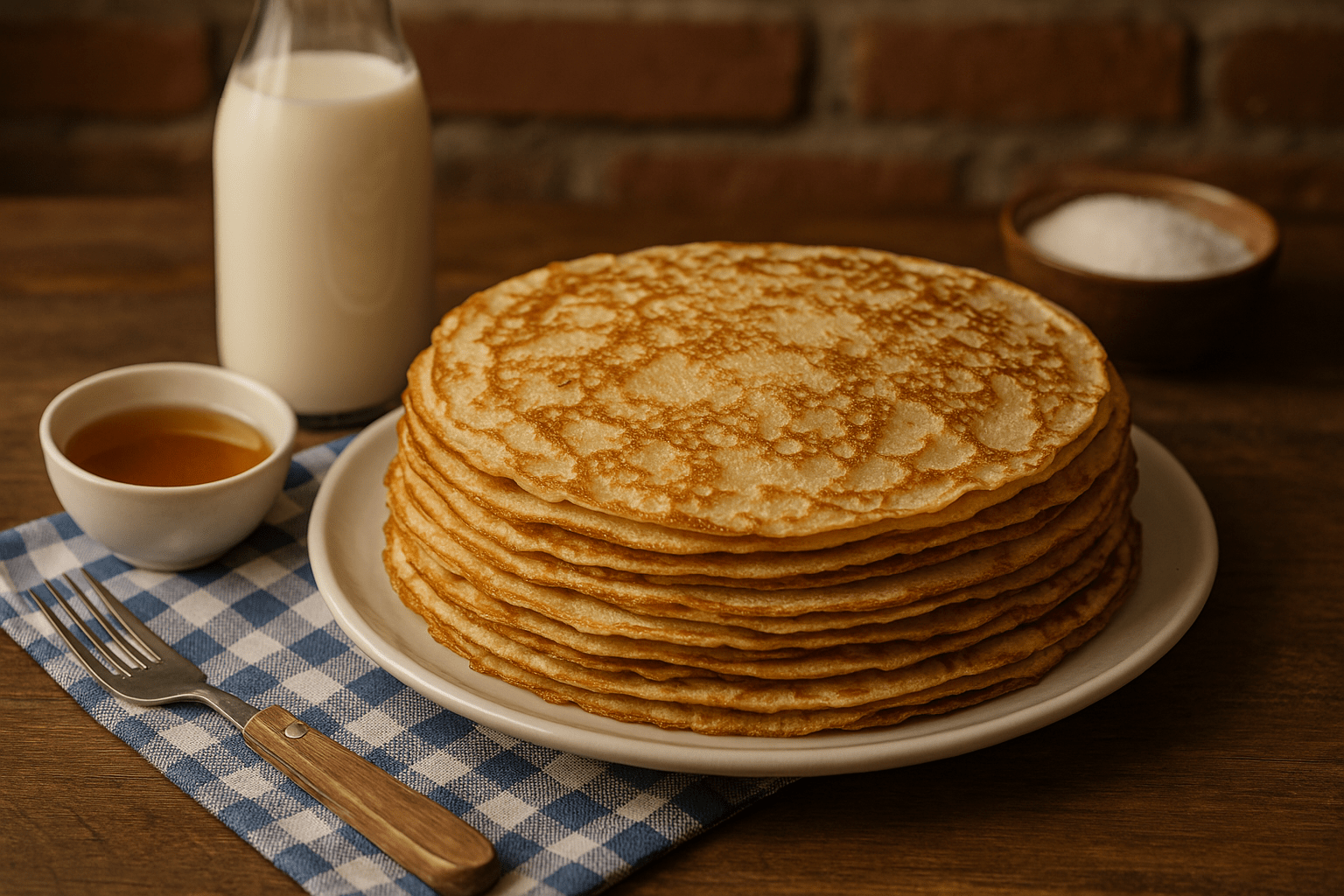How to make the perfect pancakes?
Pancakes: almost everyone in the Netherlands grew up with them. They bring back memories of Friday evenings with the family, a children's party full of laughter, or a simple meal on a rainy day. There are few dishes that are so versatile and can at the same time evoke such a feeling of home.
What makes pancakes so special is the balance between simplicity and endless variation. With a few basic ingredients, you can conjure up something that everyone will enjoy in no time. But make no mistake – making really good pancakes is a skill in itself. Think of the right thickness, a nice golden brown color, and a batter that is just airy enough. And then we haven't even mentioned the pan, because that also makes a world of difference.
In this blog you will read everything you need to know to make classic Dutch pancakes that you can be proud of. No fuss, just a solid basic recipe with tips that will help you impress every time. Whether you go for sweet, savory or a combination of both: this is the starting point for your pancake party.
What are we going to talk about?
- Ingredients
- Step-by-step plan for the best result
- The right pan makes a difference
- Serving inspiration
- Frequently Asked Questions
Ingredients (for about 8 pancakes):
- 250 grams of flour
- 2 eggs
- 500 ml milk
- pinch of salt
- Butter or sunflower oil for frying
Optional, for variation: bacon, apple, raisins, cheese, syrup, powdered sugar
Step-by-step plan for the best result
- Sift the flour into a large mixing bowl and add a pinch of salt.
- Make a well in the center of the flour and crack the eggs into it.
- Pour in the milk a little at a time while whisking. This prevents lumps and ensures a smooth batter.
- Let the batter rest for 10 to 15 minutes. This will help it bind better and make your pancakes fluffier.
- Heat a good heavy-bottomed frying pan over medium heat and melt a small knob of butter or use a little oil.
- Pour a ladle of batter into the pan and swirl the pan so that the batter is evenly spread.
- Cook the pancake until the top is dry and the bottom is golden brown. Flip and cook the other side for another minute.
Tip: Do you want to use bacon, apple or cheese? Then put this in the pan first, fry it briefly, and then pour the batter over it. This way it caramelizes well and stays nicely on the pancake.
The right pan makes a difference
A flat, evenly heated pan is essential. Non-stick pans are handy, but a cast iron pancake pan retains heat for longer and ensures even cooking – ideal for beautiful, golden brown pancakes. At Kookgigant you will find high-quality pans that are specially designed for this type of preparation, such as the Le Creuset Pancake Pan (28 cm) and the Demeyere Alu Pro 5 Ceraforce Pancake pan (28 cm) with non-stick coating. Both pans offer everything you need to bake the perfect pancake every time.
Serving inspiration
- Classic sweet: powdered sugar and syrup
- Savory: old cheese with bacon, or goat cheese with honey
- Fresh: apple with cinnamon and raisins
- Festive: scoop of vanilla ice cream with warm cherries
Making good pancakes doesn’t require complicated techniques, but it does require attention to detail: a smooth batter without lumps, a well-heated pan that retains its heat well, and above all a little patience. Take your time, experiment with toppings, and enjoy the process – because making pancakes is at least as much fun as eating them.
With this recipe and the right pan at home, you can't really go wrong. Whether you choose classic with syrup or adventurous with bacon and goat cheese: you can't go wrong.
Enjoy your meal and have fun baking! 🥞
Frequently Asked Questions
-
Where do pancakes come from?
Pancakes have been eaten all over the world for centuries, but their origins probably lie in Europe. The first versions appeared in the Middle Ages. In the Netherlands, pancakes have been popular since the 16th century. Every culture has its own version – from the French crêpe to the American pancake. The Dutch pancake is unique because of its larger size and thinner structure than the American version, but thicker than a crêpe.
-
What flour should I use for pancakes?
For classic Dutch pancakes, it is best to use wheat flour (patent flour). This flour has a fine structure and provides a smooth, supple batter. You can also vary with whole wheat flour for a slightly fuller taste and more fiber, or replace part of the flour with buckwheat flour for a nutty twist.
-
What is the difference between a crepe and a pancake?
Crêpes are the French, extra thin version of pancakes. They are often made with less batter per pan, making them wafer-thin and almost transparent. Dutch pancakes are slightly thicker, larger and often filled or topped with ingredients such as bacon, apple or cheese. Crêpes are usually served as a dessert, while pancakes are also eaten as a main course in the Netherlands.
-
How Long Can You Keep Pancakes (and Where Is the Best Place to Store Them)?
Baked pancakes can be stored covered in the refrigerator for 2 to 3 days. Let them cool down first and place baking paper between each pancake to prevent sticking. You can reheat them in the microwave, oven or frying pan. Do you want to store them longer? They will keep in the freezer for up to 2 months. Then pack them airtight, for example in a freezer bag or storage container, and defrost them slowly in the refrigerator or microwave.
-
Can you make pancakes without eggs?
Yes, you can replace the egg with mashed banana, applesauce or a plant-based egg alternative. The texture will change slightly, but the result will still be tasty – handy for vegans or people with an egg allergy.


